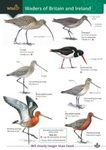![Penguins Penguins]()
Click to have a closer look
About this book
Contents
Customer reviews
Biography
Related titles
About this book
Penguins, among the most delightful creatures in the world, are also among the most vulnerable. The fragile status of most penguin populations today mirrors the troubled condition of the southern oceans, as well as larger marine conservation problems: climate change, pollution, and fisheries mismanagement. This timely book presents the most current knowledge on each of the eighteen penguin species-from the majestic emperor penguins of the Antarctic to the tiny blue penguins of New Zealand and Australia, from the northern rockhopper penguins of the South Atlantic and Indian Oceans to the Galapagos penguins of the equator – written by the leading experts in the field.
Included for each species:
- Life history
- Distribution, population sizes and trends
- International Union for the Conservation of Nature (IUCN) status
- Threats to survival
- Legal protection
Penguins: Natural History and Conservation also provides information on current conservation efforts, outlines the most important actions to be taken to increase each population's resilience, and recommends further research needed to protect penguins and the living creatures that share their environment.
Beautifully illustrated with full-color photographs of each species in their natural habitat and detailed charts and graphs, Penguins: Natural History and Conservation will be an invaluable tool for researchers, conservation groups, and policy makers. It will also enchant anyone interested in the lives or the plight of these fascinating animals.
Watch a trailer below:
Contents
Global Penguin Society
Introduction
I. LARGE PENGUINS GENUS APTENODYTES
1. King Penguin (Aptenodytes patagonicus)
2. Emperor Penguin (Aptenodytes forsteri)
II. BRUSH-TAILED PENGUINS GENUS PYGOSCELIS
3. Adélie Penguin (Pygoscelis adeliae)
4. Chinstrap Penguin (Pygoscelis antarctica)
5. Gentoo Penguin (Pygoscelis papua)
III. YELLOW-EYED PENGUIN GENUS MEGADYPTES
6. Yellow-Eyed Penguin (Megadyptes antipodes)
IV. CRESTED PENGUINS GENUS EUDYPTES
7. Southern Rockhopper Penguin (Eudyptes chrysocome)
8. Northern Rockhopper Penguin (Eudyptes moseleyi)
9. Erect-Crested Penguin (Eudyptes sclateri)
10. Fiordland Penguin (Eudyptes pachyrhynchus)
11. Snares Penguin (Eudyptes robustus)
12. Macaroni Penguin (Eudyptes chrysolophus)
and Royal Penguin (Eudyptes schlegeli)
V. BANDED PENGUINS GENUS SPHENISCUS
13. African Penguin (Spheniscus demersus)
14. Magellanic Penguin (Spheniscus magellanicus)
15. Humboldt Penguin (Spheniscus humboldti)
16. Galápagos Penguin (Spheniscus mendiculus)
VI. LITTLE (OR BLUE) PENGUIN GENUS EUDYPTULA
17. Little Penguin (Eudyptula minor)
Conclusion
Acknowledgments
Contributors
Customer Reviews
Biography
Pablo García Borboroglu is a researcher at the National Research Council of Argentina, president of the Global Penguin Society, and affiliate professor at the University of Washington. P. Dee Boersma is professor of biology and Wadsworth Endowed Chair in Conservation Science at the University of Washington. She is coeditor of Invasive Species in the Pacific Northwest and executive editor of Conservation magazine.











































